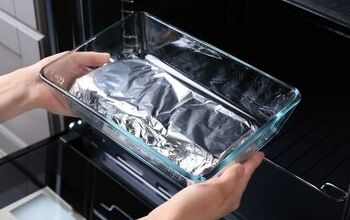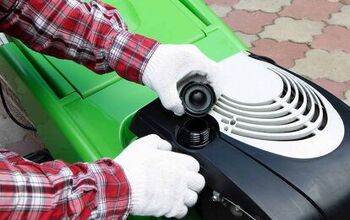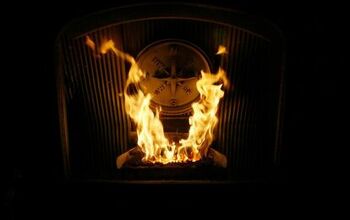How To Disconnect A Gas Stove (Step By Step Guide)

It isn’t something that happens often, but there will come a need to disconnect your gas stove. Whether it is to perform a thorough cleaning, to replace a damaged connector, or swapping out the appliance entirely, it helps to know how to disconnect everything properly. Whatever the case, it can be easy to properly disconnect the gas line.
Disconnecting the gas stove is easy, just make sure to check for leaks first and turn off the flow of gas to that particular line. From there, the rest is relatively easy. Turn the valve, cap the pipe, disconnect everything, and there you have it!
There’s plenty of reasons you need to know how to turn off your gas stove, whether it’s for reparations or renovations. In this article, we will cover all of this information so you can do it safely, using our step by step instructions. Let’s get started, shall we?
Related Content: Gas Stove Smells Like Propane When It’s Off? | Gas Oven Won’t Turn On But The Stove Works? | Why Does My Oven Smell Like Gas?
Do You Need Gas Appliance Services?
Get free, zero-commitment quotes from pro contractors near you.

Is It Safe To Disconnect A Gas Stove?
Believe it or not, a lot of homeowners think that it is unsafe for them to do any disconnection on their own stoves. This is what leads them to pay for a professional to do something that they could easily do. And while paying a professional is fine and well, it is money that is ultimately getting thrown out the window.
The most important part of the disconnection process is ensuring that there are no gas leaks. These leaks can occur either in the line itself or in the connection from the stove. The smell of gas will be quite apparent and can be dangerous if the leak is not addressed in a timely fashion.
Properly Disconnecting A Gas Stove
Make sure that you take the proper safety precautions before disconnecting the lines. When you are comfortable that the safety precautions have been taken, you can move towards disconnecting the gas line from the stove.
This is actually rather simple in nature and is something that inexperienced homeowners make into a complicated endeavor. The process of learning how to disconnect a gas stove from the gas line is actually quite easy.
Step 1: Turn The Valve
Really, all that needs to be done is to reach behind the stove and turn off the gas. All it takes is a 90-degree turn. It is as simple as that and from there, you can disconnect any connections to the stove. This allows for mowing the stove wherever it needs to be.
Keep in mind that as soon as you disconnect the hose, move it out of the way and then spray some soapy water onto the gas line connection. It is also a good time to see if there may be a potential gas leak in the line itself. Being aware of leaks is essential and addressing them early on is the best way to handle the issue.
Step 2: Cap The Pipe
A good rule of thumb when you are replacing the stove is to cap the pipe until you are ready for the new stove to be installed. A sealer or threaded cap can be purchased for relatively cheap at a local hardware store.
Capping the pipe is meant to protect you in case someone accidentally hits the valve during the working process and jostles it open. This is what will keep you from potentially having a major gas leak inside of your home.
If you are still concerned about a potential leak, turn off the gas main as you go. This offers an extra measure of protection and put minds at ease during the replacement of the old stove and the installation of the new one.
Step 3: Reconnecting The Gas Line
After everything has been addressed and the new stove is ready for installation, there are a few things to keep in mind. Some experts recommend using what is known as pipe dope (make sure that they have been approved for natural gas lines). The “pipe dope” is a description for a pipe thread sealant. This is meant to create an improved seal between the new pipe and the valve, creating a better overall connection than the previous one.
Make sure that you test for leaks even after the new connection has been implemented. Spray the soapy water to make sure that no bubbles take form; if you see bubbles, turn the gas line off until you can get an idea of where the source of the leak is originating so that it be corrected.
Step 4: Remove The Stove Without Damaging The Floor
Removing an old stove is a common occurrence and the last thing that we want to see happen is for the stove to damage the flooring in any way. Having to replace flooring that becomes damaged results in more time spent and additional costs.
The simplest way to do this is to grab the stove with both hands and rock it back and forth until you can move it a good distance away from the wall. If it is in a cabinet, you will need to clear the cabinet before you can fully remove the stove.
When the stove has fully cleared the cabinet or walls, use an appliance dolly. This not only saves the floor from any damages that may happen, it will also save your back from unnecessary wear and tear from having to lug that big appliance around.
Video: Disconnecting the Stove Safely
Disconnecting An Electric Oven
Electric ovens aren’t much more difficult to handle. Make sure, like the gas line, to turn off the circuit breaker controlling the electricity to the outlet where the electric stove is plugged in. If you do not shut off the power to that outlet, you run the risk of electrocution and injury.
With the power off, you can simply unplug the appliance and remove it from its positioning. As is the case with the gas stove, use an appliance dolly to safely remove the appliance. After installing the new appliance, all you have to do is flip the breaker back on to restore power to that outlet.
Don’t Be Afraid To Call In A Professional
At the end of the day, it all comes down to your comfort level in removing the old appliance safely. If it something that you are comfortable doing, that works. If it isn’t, don’t force it. There are plenty of professionals out there that can handle the task safely and securely, providing peace of mind along the way.
Always tell the professional what you need help with beforehand so that you can get an accurate quote. Sometimes, they will charge you a flat fee of $50 to $150 to disconnect your gas stove. Other times, they will charge an hourly rate of $40 to $75 per hour. So, what you end up paying highly depends on the job, professional, and the situation at hand.
Professional Cost
Operating under the assumption that all of the proper gas lines are in place, it comes down to installing or removal. Labor on average is $75/hour for either appliance removal or installation. For a gas stove disconnect and removal, you can count on at least two hours. This equates to roughly $150.
A professional will do a more secure job than an amateur might, but just know that it will come at a cost, and to factor that into the budget
Can Plumbers Disconnect Gas Stoves?
Most plumbers should be more than qualified to disconnect gas stoves. Even stoves that are powered by propane can be handled by a certified plumber. Plumbers are meant to handle things like piping that runs through the house; this is the gas, water, electricity, and more.
Plumbers also have the necessary tools to get the job done right. Having a pipe wrench, gas valves, fittings, gas pipe, supply line, and a shut-off valve are all essentials to ensure that the job is done properly. Most do-it-yourselfers won’t have these on hand; this can raise the cost of a do-it-yourself job substantially.
Related Questions
Can I disconnect my gas stove myself?
You can shut off and disconnect your gas stove on your own. However, this is only done safely is the odor of the gas is faint, and coming from the area of the stove. However, if you believe you have a gas leak, you’ll need to instead call in a professional. In this case, remove all humans and animals from your home and call a professional.
When should I replace my gas stove?
You should replace your gas stove at least every 13 to 15 years. However, if maintained properly it can last up to 20 years. Pay attention to any issues with your gas stove to watch for signs of it giving out.
How long should a gas stove last?
Gas ranges last around 15 years while electric stoves last around 13 on average. Make sure you clean your stove frequently and keep it in the best shape so that it can last you between 15 to 20 years.
Do You Need Gas Appliance Services?
Get free, zero-commitment quotes from pro contractors near you.

Our Summary
First and foremost, if you’re not comfortable fixing your gas stove on your own, then you should call in a professional instead. However, this job can be done on your own if you wish to forgo the costs of hiring someone. If you smell a gas leak, you will need to remove any humans and animals and call the gas leak emergency line.
Related Guides

Ryan Womeldorf has more than a decade of experience writing. He loves to blog about construction, plumbing, and other home topics. Ryan also loves hockey and a lifelong Buffalo sports fan.
More by Ryan Womeldorf





















![10 Most Dangerous Neighborhoods in Baltimore [Updated]](https://cdn-fastly.upgradedhome.com/media/2023/07/31/9075655/10-most-dangerous-neighborhoods-in-baltimore-updated.jpg?size=350x220)





